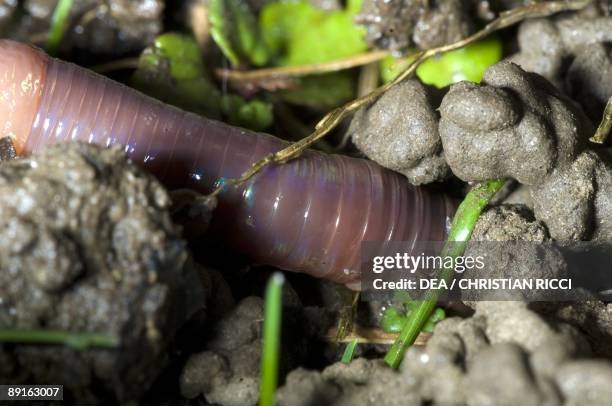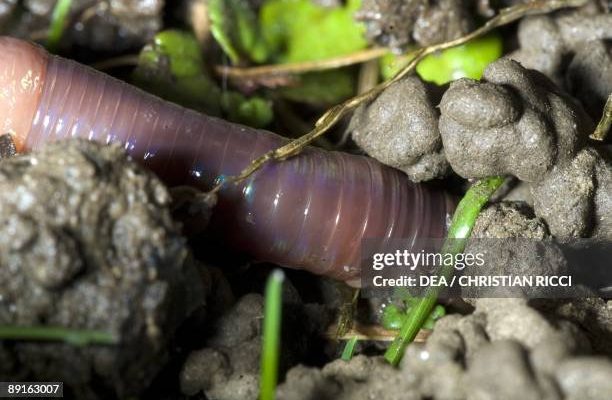
Imagine you’re out for a walk, feeling the earth beneath your shoes. Beneath that ground, segmented worms are tunneling through the soil, creating homes that help the environment thrive. They have specific preferences for where they live, often influenced by factors like moisture, temperature, and the type of soil. Let’s dig deeper to understand how segmented worms choose their habitats and why it matters.
What Are Segmented Worms?
Segmented worms, commonly known as annelids, are fascinating members of the animal kingdom. They’re called segmented because their bodies are divided into distinct sections, which can be seen as rings or segments. This design is not just for looks; it gives them flexibility and plays a role in their movement.
These worms come in various types, with earthworms being the most familiar. They thrive in moist environments and are vital for soil health. Their burrowing habits improve soil aeration and drainage, helping plants grow. However, different species of segmented worms may have varied habitat preferences, making it essential to study where they like to live.
Moisture Levels: A Key Factor
You might be wondering why moisture is so crucial for segmented worms. Here’s the thing: worms breathe through their skin, so they need their environment to be moist to absorb oxygen. If the soil is too dry, they can suffocate.
In the wild, segmented worms prefer habitats that have consistent moisture levels, like:
- Forest floors
- Wetlands
- Garden beds
- Near streams or rivers
These areas provide them with the right balance of moisture and organic material, which is essential for their survival. So, the next time you’re in a garden or forest, remember that the damp earth is a bustling city for these tiny creatures!
Soil Type Matters
Not all soils are created equal, and segmented worms have preferences. They thrive in loamy soil, which is a mix of sand, silt, and clay. This type of soil offers good drainage while still holding enough moisture. It’s like a cozy little blanket for them.
On the flip side, worms aren’t huge fans of compacted or sandy soils. In compacted soil, they struggle to move and find food, while sandy soil dries out too quickly. The richness of the soil also matters; a nutrient-rich environment means more organic matter for these worms to munch on.
You may find segmented worms happily living in areas like:
- Woodlands with decaying leaves
- Agricultural fields with rich topsoil
- Compost heaps, where organic matter is plentiful
Temperature Preferences
Temperature plays a vital role in where segmented worms feel at home. Generally, these worms prefer a cool to moderate climate. Extreme heat can cause them to burrow deeper underground to escape the surface heat, while cold weather can make them less active.
Most segmented worms thrive in temperatures between 50°F and 70°F (10°C to 21°C). They tend to become inactive in colder weather, shutting down their activities until warmer conditions return. This is why you might find them more active in the spring and fall, when temperatures are just right.
If you live in a region with extreme seasonal changes, you might notice fewer worms in winter or during heatwaves. They know how to take care of themselves by finding the right spots to wait out the tough times.
Impact of Environmental Factors
Just like us, segmented worms are influenced by their surroundings. Pollution, land use changes, and climate change can significantly affect their habitats. For instance, pesticides and chemicals used in agriculture can harm their populations, leading to fewer worms and, consequently, less healthy soil.
Here’s a quick breakdown of environmental factors impacting segmented worm habitats:
- Pollution: Chemicals can contaminate their homes and food sources.
- Deforestation: Removing trees can disrupt moisture levels, making it less hospitable for worms.
- Climate Change: Changing weather patterns can affect moisture and temperature, altering their habitat preferences.
Taking care of our environment means protecting these tiny but mighty creatures and their habitats, which ultimately supports the larger ecosystem.
Why Understanding Their Habitat Preferences Matters
You might be thinking, “So what? Why should I care about where segmented worms live?” Well, here’s the thing: understanding their habitat preferences gives us insight into soil health and ecosystem balance.
Healthy populations of segmented worms indicate a thriving environment. They play a crucial role in breaking down organic matter and improving soil structure, which is vital for agriculture and plant growth. In essence, when we protect their habitats, we’re also protecting our food sources and the health of our planet.
Moreover, studying these preferences helps scientists develop better conservation strategies. By maintaining the right conditions for these worms, we can enhance soil health and promote biodiversity. It’s a win-win situation for everyone!
In summary, segmented worms are more than just soil dwellers; they are essential players in maintaining the health of our ecosystems. Understanding their habitat preferences can help us appreciate their role and why we should care about the environments they thrive in.
From the moisture levels and soil types to temperature ranges and environmental impacts, each aspect is crucial for their survival. By ensuring we create and maintain environments that support these incredible creatures, we not only safeguard their future but also enhance the world around us. So next time you step outside and feel the earth under your feet, remember all the life that lies beneath—especially those hardworking segmented worms!

